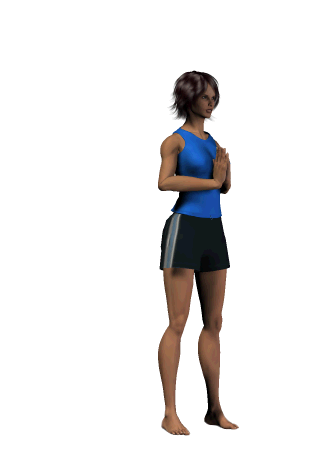Throw light on the importance of surya namaskar
Surya Namaskar, also called Sun Salutation, is a fundamental yoga practice consisting of a flowing sequence of 12 postures. It’s a full-body workout that incorporates stretching, strengthening, and cardiovascular benefits.
Do not try these without a professional help, this information is to provide you an awareness.
If you have any injuries or pre-existing conditions, consult with a doctor or yoga therapist before practicing.
Here’s a breakdown of Surya Namaskar:
Meaning and Origins:
- Surya Namaskar translates from Sanskrit as “Sun Salutation.”
- It’s a way to greet and honor the sun, the source of life.
- While the specific sequence is relatively recent, similar exercises have been practiced in India for centuries.
Benefits:
- Improves flexibility and range of motion
- Builds strength and tones muscles
- Boosts cardiovascular health
- Increases circulation
- Improves digestion
- Helps manage weight
- Reduces stress and anxiety
Sun Salutation Sequence:
There are twelve postures in a complete Sun Salutation cycle. Here’s a general overview of the flow:
- Standing Mountain Pose (Tadasana): Starting position with hands at your sides.
- Raised Arms Pose (Hastauttanasana): Inhale, raise your arms overhead.
- Forward Fold (Hastapadasana): Exhale, fold forward and hinge at the hips, reaching for your feet.
- Equestrian Pose (Ashwa Sanchalanasana): Step back with one leg into a lunge position.
- Plank Pose (Dandasana): Lower down to a push-up plank position.
- Eight-Limbed Pose (Ashtanga Namaskar): Lower your body to the ground, chest to mat, knees down.
- Cobra Pose (Bhujangasana): Lift your chest and upper body off the mat.
- Downward-Facing Dog (Adho Mukha Svanasana): Push your hips back and up into an inverted V position.
- Equestrian Pose (Ashwa Sanchalanasana): Bring one leg forward between your hands.
- Forward Fold (Hastapadasana): Step forward with your other foot and fold forward.
- Raised Arms Pose (Hastauttanasana): Inhale and raise your torso back up, reaching your arms overhead.
- Standing Mountain Pose (Tadasana): Return to the starting position.
Getting Started:
There are many variations of Sun Salutation. If you’re new to yoga, it’s wise to begin with a beginner-friendly version and focus on proper form over speed. Here are some tips:
- Breathe deeply and rhythmically throughout the practice.
- Move slowly and mindfully.
- Listen to your body and don’t push yourself beyond your limits.
- Consider practicing with a yoga instructor to ensure proper alignment.
You can find many video tutorials online that demonstrate Surya Namaskar, Here one below
Image credit
Camino (269703), CC BY-SA 3.0, via Wikimedia Commons

